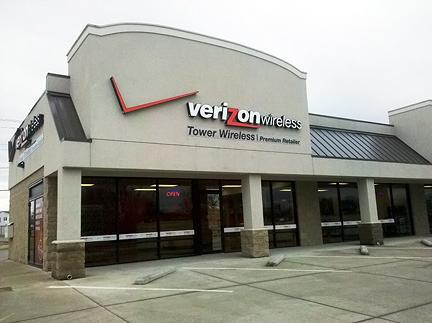
When purchasing a new cell phone, it's common practice to do some research and find the best deal available. If you can find the phone you are looking to purchase for $50 cheaper, why not? It's not a bad idea to do some scrounging for the best deal and to save a few bucks before locking yourself into that two-year agreement. But these savings don't just come from thin air. There is usually something behind the savings, a sacrifice you, the customer, will have to make to get your phone for cheaper.
Buying directly from a carrier store – corporate stores, not those that have “authorized retailer” plastered everywhere – means you likely know exactly what you're getting yourself into. Not everything in wireless is always black and white, but for the most part, things are usually as they seem when you're dealing direct. The problem is, there are usually cheaper options. Carrier stores like to throw mail-in rebates (usually $50 or $100) into the mix, which will bump the initial price of the phone, but you get that money back within a month or two. If you're anything like me, you procrastinate and forget about said rebate until the day after the deadline. It never fails and I never see my savings.
The truth is, there are some great deals to be had out there and as per usual, there are also things to keep an eye out for.
One of the more popular ways to find some savings is by purchasing through a third-party brick and mortar store like Best Buy Mobile, Wal-Mart, RadioShack or even a third-party retailer (like the one pictured above). When you are dealing with one of these stores, chances are that you have little to worry about. You may not always be offered every service possible like carrier insurance over the in-house, third-party insurance or special deals like “Buy one, get one,” but more often than not, you can find some great deals in these establishments. Buying from third-party dealers is a way around mail-in rebates, but still expect to pay activation and upgrade fees.
Although third-party stores are a convenient, easy way to find a good deal, there are several other places you should check when shopping for a new phone. We live in the Communication Age, the Internet is one of the best tools you can use for you search. It seems like every week or so I see a headline describing a deal found on a popular Android phone on Amazon or Wirefly. I won't deny that you can find some pretty amazing deals on phones through these sites. Generally, however, there is a reason that you can purchase these phones for sometimes half the price of the normal subsidized price.
For example, this morning Phone Arena noted that the Droid X2 from Verizon Wireless could be purchased through Amazon for $59.99. Normally, the X2 sells for $199.99 on contract with Verizon. How does Amazon undercut Verizon by $140? It's simple, really. When you purchase the phone through an establishment such as Amazon or Wirefly, you are not only signing an agreement with Verizon, but with the third-party company as well. As you continue to pay your monthly bill, the carrier will pay the third-party, and they will earn money back on the "instant savings" that were given to you. Of course, if you break that agreement, there are consequences. Amazon's agreement in particular reads:
When you purchase your device with service from AmazonWireless.com, we automatically pass along an instant discount from the carrier to you. This discount has been provided to you based on your agreement to (a) activate a new, or extend an existing, line of service for this device with the carrier, and (b) maintain this service in good standing for a minimum of 181 consecutive days. If you do not activate or extend a line of service in connection with this device, or if your service is canceled/disconnected before 181 consecutive days, AmazonWireless.com will charge you $250 per device, plus applicable taxes.
Wirefly's agreement is very similar; they charge $200 for a feature or messaging phone and $350 for a smartphone.
Let's say you purchased a smartphone (or “Advanced Device,” as Big Red likes to call them) for Verizon through Amazon. You sign an agreement with both companies: two years with Verizon, 181 days with Amazon. If you simply want to swap phones (say you purchased one without a contract) before 181 days, Amazon will automatically charge you $250. If you decided to switch carriers after four months, you would instantly be charged $585 ($250 for breaking the agreement with Amazon and $335 for the prorated ETF from Verizon).
If you are the kind of person that buys a phone and plans on keeping it for the full agreement – even 182 days for that matter – then there is no problem buying through an online dealer like Wirefly. Take advantage of the deal, it's there for your convenience. Dealing with other authorized dealers like RadioShack and Best Buy Mobile can be rather advantageous, too, as they frequently run specials on phones.
Making sure you're getting the best deal on your cell phone purchase is an easy way to save a couple hundred dollars. Times are rough and money is tight; saving a penny here and there can go a long way. Just make sure you remember to read the fine print and know what you are agreeing to. Unknowingly breaking an agreement could easily cost you double or triple what you have saved.
Image via Tower Wireless